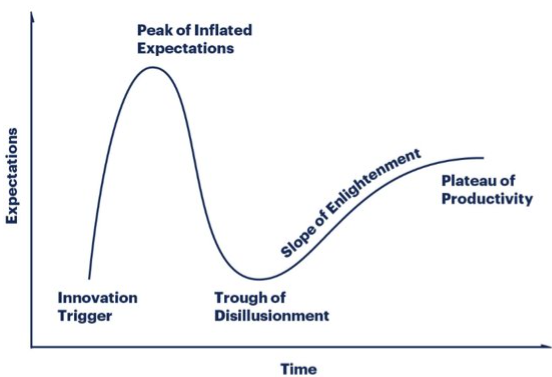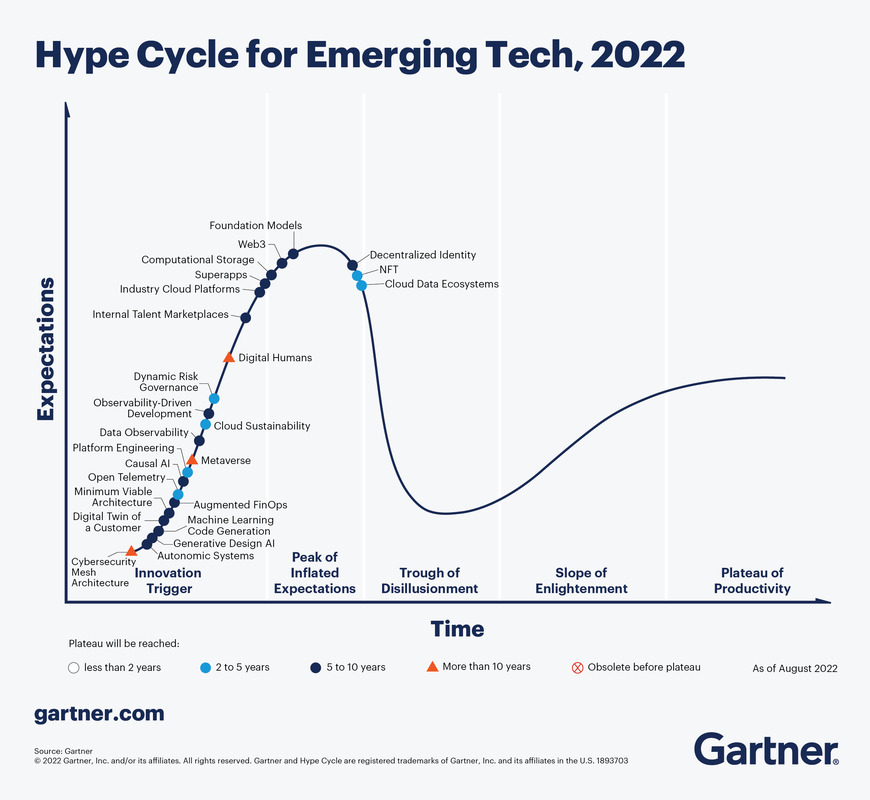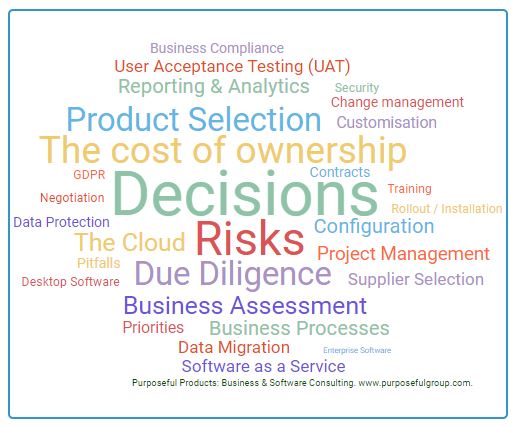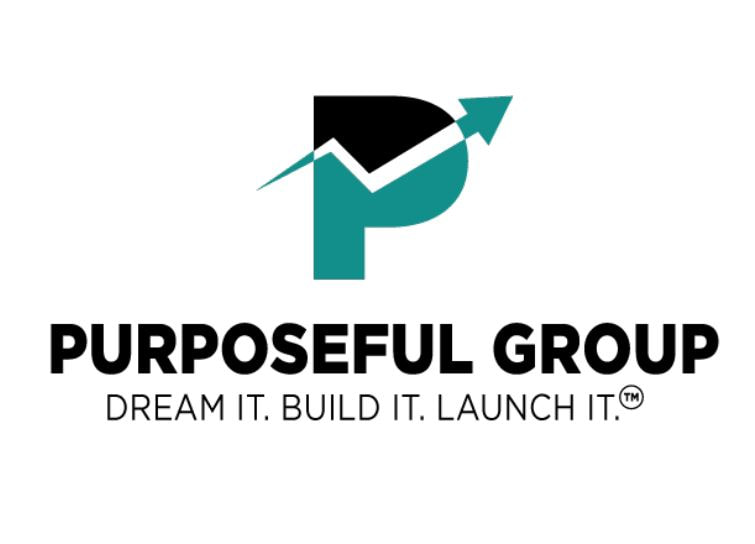|
This will change the world!” “We're going to make a fortune!” “THIS technology is the answer we’ve been searching for!” Hmmm. Maybe, maybe not! In that case, how exactly should we decide where we should focus our time and/or our money as the pace of innovation continues? The Gartner Hype Cycle is a useful tool to assess tech advances, and shows the journey that tech trends take over time. The cycle has 5 phases: 🔵 Phase 1: Innovation Trigger 🔵 The Innovation Trigger is when a new technology emerges. The tech makes headline news, and people get excited. Expectations surrounding the tech start to grow. 🔶 Phase 2: Peak of Inflated Expectations 🔶 This is the peak of the rollercoaster.🎢 Suddenly EVERY problem will be solved using this tech! (This is where the "hype" comes into it.) Caution is key - this is where investors and startups can make the wrong decisions, and may end up "backing the wrong horse."🤔 🟡 Phase 3: Trough of Disillusionment 🟡 Reality sets in. Erm, maybe the tech isn't that amazing after all... Problems and barriers to usage become more obvious. Ventures may fail, or lose value, and confidence dips as flaws with the tech's reliability, security, accuracy, safety, or its impact on people, the environment or other issues come to light. 🟢 Phase 4: Slope of Enlightenment 🟢 Consumers and/or businesses start to find affordable, practical uses for the tech, and access spreads beyond scientists, elite innovation teams, or people with specialist skill sets. We start to understand how best to use it, and there are clear wins and benefits. At this point, it could be fairly save to say that the innovation is here to stay and as user adoption grows it could well be a sound investment (after completion of some careful analysis and due diligence, of course!) I think this is where ChatGPT (openai.com) and Llama2 (ai.meta.com/llama) have brought us to with generative AI. Let me know in the comments if you agree with this, or not! (Other major players include Google's Bard and Anthropic's Claude.) 🟠 Phase 5: Plateau of Productivity 🟠 The tech matures, and becomes part of everyday life. For example, smartphones!📱The tech is reliable, easy to use/access, and adds real value. Tips & takeaways: 1️⃣ Understanding where tech trends are on the Hype Cycle can help with good decision-making in terms of investments, study, adoption of tech for business, and generally knowing when to get involved. 2️⃣ Not every tech advancement will reach stages 4 and 5. Some will stay niche, and some will die altogether. 3️⃣ Research examples or "use cases" for how tech may impact your industry or profession. Check for new advances through content from futurists, podcasts, webinars and tech blogs. 4️⃣ Start experimenting with new/unfamiliar tech via free accounts, software demos, or training. You're unlikely to "break" anything, and the more you explore, the more normal this will become. As a result, it will be easier for you to take advantage of new opportunities as they arise! Updates come out each year as Gartner reviews the latest tech advances and where they sit within the Hype Cycle. You can see an example from 2022 below.
0 Comments
If so, there can be a lot to consider.
It is common to see articles, blog posts and the like, which immediately launch into comparisons between different types of software. I believe this is a mistake which can mislead businesses. Although these comparisons are useful, initially, try to take a step back from this sort of information, and first look inwards, before looking outwards. Your starting position should always be your specific characteristics, and requirements as a business, or department. From this point, with a clear picture of what you need and why, you are simply following a process of elimination, based on your business drivers and commercial needs. Following this approach is far more likely to lead to a positive result. Assuming that you've assessed the specific needs of your business, and the activities that you would like the software to perform for you, let’s take a look at 4 questions that you can ask yourself when thinking about purchasing software: 1. Do you wish to be able to “own” or adapt your software? Do you want the freedom to use the software “for life,” potentially holding it for as long as 3-10+ years? Is it important to have the scope to adapt it now, or in the future, or to be able to connect (i.e. integrate) it with other systems? If you wish to extend, or flex a product to meet your needs, this is less likely to be possible with “rented” SaaS products, (although moving up to a higher pricing tier may allow you to access a wider range of options.) On the other hand, "ownership" (via a license that allows you more flexibility to modify the software, or the ability to hold it for a longer period) may not be the best option if:
2. How urgently do you require the software? If a short sales cycle is needed, consider that for larger and more complex software systems, it can take weeks (or even many months) to:
3. Is convenience, or control most important?
However, if you are less concerned about these items, then SaaS products are generally more convenient, with fewer set-up tasks required. 4. Do you seek highly-specialised functionality? How niche are your requirements? If you are unable to find functionality that meets your needs on the open market, or you have masterminded a process, or technique that you want your software systems to reflect, you may wish to consider software that can be altered by a software provider, or decide to have a product built in-house, or by a 3rd party. (In the next chapter, we’ll cover some key points to review if you are thinking of having software built, including options that could expedite the build of your product.) Copyright 2017 © K.N. Kukoyi. Purposeful Products. This content was taken from the software buyer's survival guide: Don't Buy Software For Your Small Business Until You Read This Book: A guide to choosing the right software for your SME & achieving a rapid return on your investment. Now available on Amazon and featured on Kindle best-seller lists in Australia, Canada, France, the UK and US: bit.ly/SME-guide Print versions of the book will be available from 18th June 2017. You can access a free Business Requirements Assessment document in Word and Excel formats (1 of the 7 free resources provided to readers of the book) here: http://bit.ly/resource1-assessment |
WHAT INFORMATION WILL YOU FIND on THE PURPOSEFUL GROUP BLOG?Want to build a mobile, or web app to offer to your existing customers? Archives
February 2024
CategoriesAll # Building Software Applications Business Life / Managing A Business Buying Software For Your Business Entrepreneur Interviews Series 1 Entrepreneur Interviews Series 2 Funding Marketing Mindset Productivity Automation Business Tips Productivity-automation-business-tips Productivity Process Automation & Business Tips Research & Publications Startup And Small Business Support Technology Techpreneur Interviews Vision Strategy & Planning X |
|
Address:
5-7 Buck Street, Camden, London, NW1 8NJ Copyright © 2024. Purposeful Group®. All Rights Reserved.
|
Email: courses[at]purposefulgroup.com
Telephone: UK: 0203 974 2225 |




 RSS Feed
RSS Feed